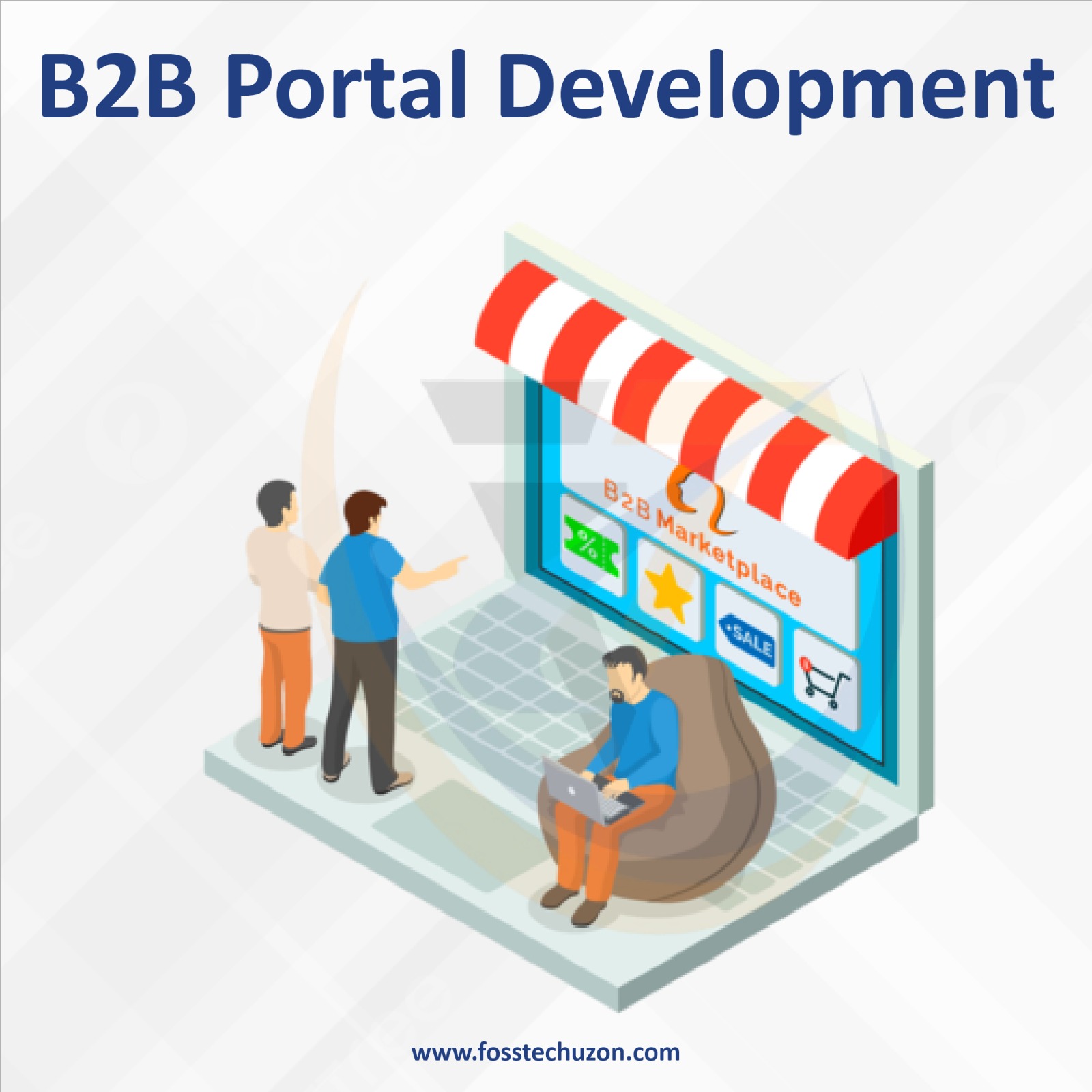B2B Portal Development
Custom web portals have been shown to enhance internal and external communication, improve customer acquisition and retention, reduce operational costs and much more.

Web portals are web-based gateways that grant access to the data repositories of a business, to authorized personnel. Once authenticated, individuals can log in to a company’s back-end cloud system using a web interface to access services or sensitive data.
These customized websites pull information from a variety of sources, such as online forums, emails, and search engines. Each informational source receives its own page where information is displayed and users can configure the portal to display certain data. Some of the most common types of web portals include federal and government portals, stock and financial portals, corporate and enterprise portals, search portals, domain-specific portals, cultural and trade portals, and tender and bidding portals.
A custom web portal can be a valuable, single point of access for information; it can also be used to create a library of categorized content. Web portals assist in search navigation, information integration, notification, and personalization.
What Is Web Portal Development?
A web portal is a secure web-based platform that delivers user access to content and varied functionality on an easy-to-use interface. Web portals are often confused with websites but the two have some distinct differences. While users can interact with data on a web portal page, websites have static, read-only content.
Web portals can have both pages that require authentication and anonymous public pages, while with websites, authentication is not obligatory. Another difference between web portals and websites relates to personalization. Web portals deliver highly personalized, real-time experiences, while websites aim for a one-size-fits-all approach to personalization.
The Web Portal Development Process
Depending on the type of business and industry, companies may find different uses for web portals and quite often, a business will have multiple portals. For example, a university may have a web portal that students can log into and a separate portal for faculty members. Web portals offer businesses an organized structure for their content and tools, making them easy to manage over time.
Developing a web portal involves a series of steps, including:
1. Web Portal Planning
The first step in the web portal development process involves creating a plan. Businesses should first explore their unique business needs to ensure that the final outcome meets their expectations and requirements. It is also important to consider regulatory constraints and the expectations of project stakeholders. With this in mind, a plan can be developed which includes a detailed portal and tech specifications.
2. Web Portal Design
The next step in the process involves designing the portal. A portal architecture design may include UX/UI designs and should be simple to use and understand. Web portal developers must build a back end, front end, and APIs.
3. Web Portal Integration
Developing a web portal also involves integrating it with other software. Web portals can be integrated with platform-based tools or custom software, such as CRM, ERP, PDM, HIE, MES, LMS, or other tools used by the business.
4. Web Portal Testing & Support
The final stages in the web portal development process involve software testing and support. During testing, the web portal development team will run tests to ensure that the portal operates as planned and complies with all requirements. The web portal is then set up to run in an IT environment; training may need to be provided to the support team. The development team may also provide on-going support for a specific period of time.
Faster Access To Business Information
When working in a fast-paced industry, companies must be able to access data quickly and efficiently. Customer service employees, marketers, financial analysts, salespeople, and similar job roles require workers to spend many hours a week accessing, updating, and reviewing business information.
Enhanced Communication In The Workplace
Good communication in the workplace is critical to keep everyone on the same page and to minimize misunderstandings. Intranet web portals can be used by managers and staff members to share vital information, such as upcoming appointments and timely alerts.
Greater Flexibility Between Applications
One of the biggest issues experienced by customer service staff involves having to constantly switch between applications. When reps need to quickly respond to customer queries, they are often forced to switch between applications to access relevant information. In the long term, this can waste considerable time and resources.
Customization & Seamless Integration
Web portals provide customers with a personalized user experience which can increase the success of a business. According to research published by Forbes, approximately 34 percent of consumers reported that they are more likely to make an unplanned purchase if the brand personalizes their content.
Reduced Print & Distribution Costs
Certain types of web portals, such as intranet portals, can also save businesses money in print and distribution costs. Intranet portals are commonly used to publish and update a wide range of corporate documents, such as business procedures, protocols, guidelines, and resources.
Tighter Security & More Versatility
The safety of company data and resources is a major concern for many business leaders. Web portals offer a high level of security for a company’s data repositories, allowing staff and customers to use these websites securely and with less fear of impending cybersecurity incidents.
Pricing
Category
Website DesignInterested in B2B Portal Development ?
Contact us today to learn more about how we can help you with B2B Portal Development .
Get In Touch